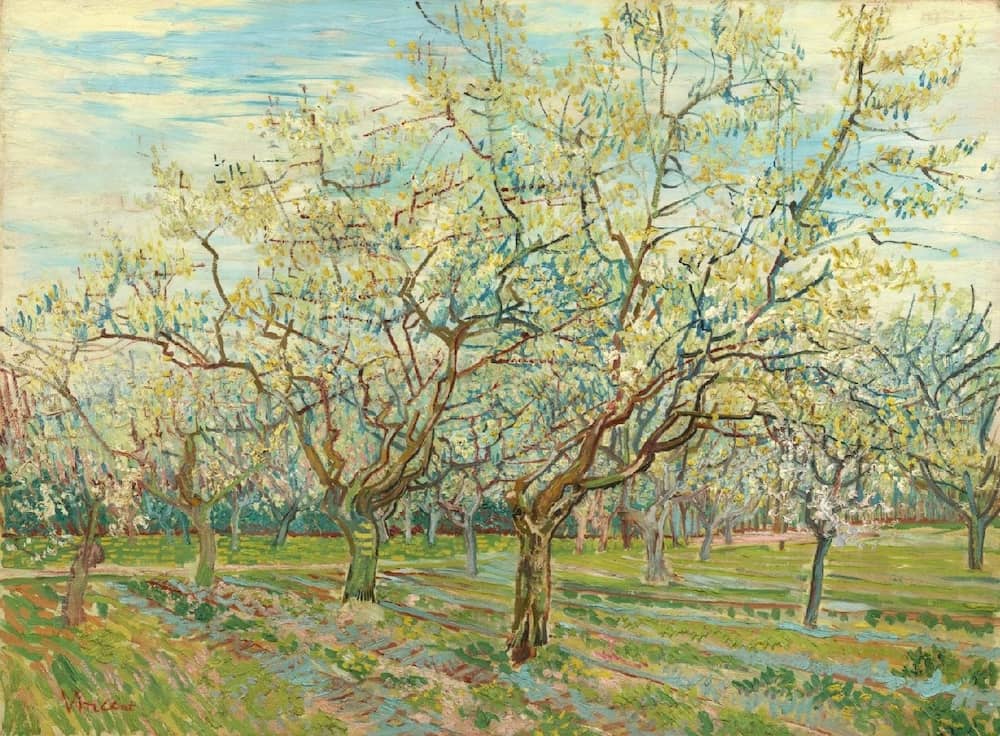The White Orchard, 1888 by Vincent Van Gogh

Shortly after he had completed The Langlois Bridge, Van Gogh started painting orchards in blossom. The motif preoccupied him for almost a month and on about 21 April, when the trees were shedding their last blossom, he produced his final version. He had by then painted a total of fourteen canvases, the first of which, dated about 24 March, was: 'a cluster of apricot trees in bloom in a small, fresh green orchard'.
Van Gogh was probably repeating the same motif several times in the hope of ultimately producing mature paintings which would attract buyers. He was hoping that the 'extraordinary gaiety' of his Provencal orchards would in any event 'finally break the ice in Holland', because, as he continued in the same letter - probably with earlier, successful examples from the Barbizon School in mind - orchards in blossom 'are motifs that one might be able to sell or exchange'. Acclaimed artists such as Daubigny and Millet had used the theme to symbolize spring, and this was undoubtedly Van Gogh's intention as well.
While working on the orchard series in the middle of April, he decided to use them to create a decorative work consisting of three triptychs for Theo. In order to convey the idea to his brother, he made a sketch of one of the triptychs. Peach Trees in Blossom formed the central panel with The Pink Orchard and The White Orchard on either side.




















